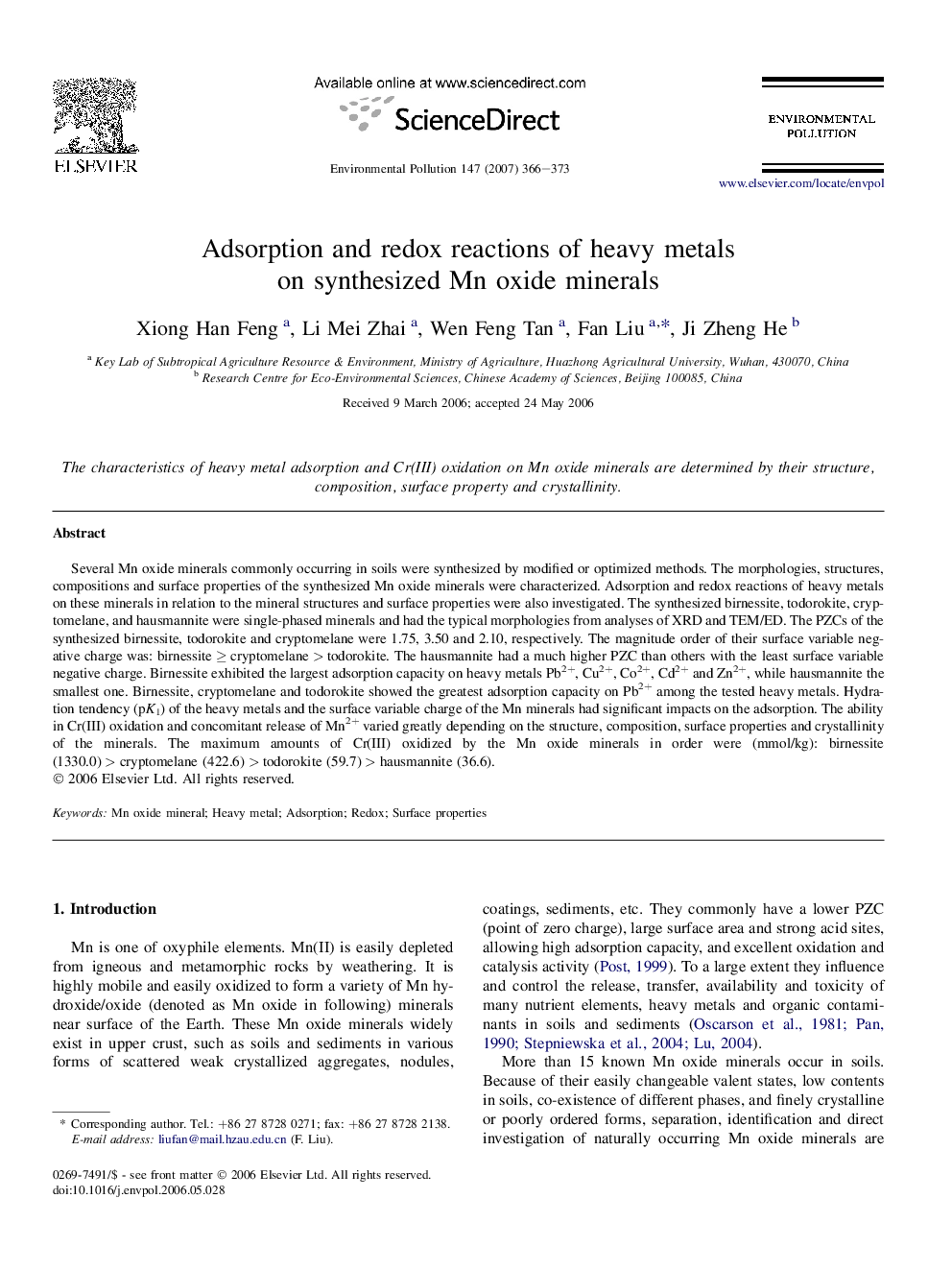| Article ID | Journal | Published Year | Pages | File Type |
|---|---|---|---|---|
| 4427030 | Environmental Pollution | 2007 | 8 Pages |
Several Mn oxide minerals commonly occurring in soils were synthesized by modified or optimized methods. The morphologies, structures, compositions and surface properties of the synthesized Mn oxide minerals were characterized. Adsorption and redox reactions of heavy metals on these minerals in relation to the mineral structures and surface properties were also investigated. The synthesized birnessite, todorokite, cryptomelane, and hausmannite were single-phased minerals and had the typical morphologies from analyses of XRD and TEM/ED. The PZCs of the synthesized birnessite, todorokite and cryptomelane were 1.75, 3.50 and 2.10, respectively. The magnitude order of their surface variable negative charge was: birnessite ≥ cryptomelane > todorokite. The hausmannite had a much higher PZC than others with the least surface variable negative charge. Birnessite exhibited the largest adsorption capacity on heavy metals Pb2+, Cu2+, Co2+, Cd2+ and Zn2+, while hausmannite the smallest one. Birnessite, cryptomelane and todorokite showed the greatest adsorption capacity on Pb2+ among the tested heavy metals. Hydration tendency (pK1) of the heavy metals and the surface variable charge of the Mn minerals had significant impacts on the adsorption. The ability in Cr(III) oxidation and concomitant release of Mn2+ varied greatly depending on the structure, composition, surface properties and crystallinity of the minerals. The maximum amounts of Cr(III) oxidized by the Mn oxide minerals in order were (mmol/kg): birnessite (1330.0) > cryptomelane (422.6) > todorokite (59.7) > hausmannite (36.6).
